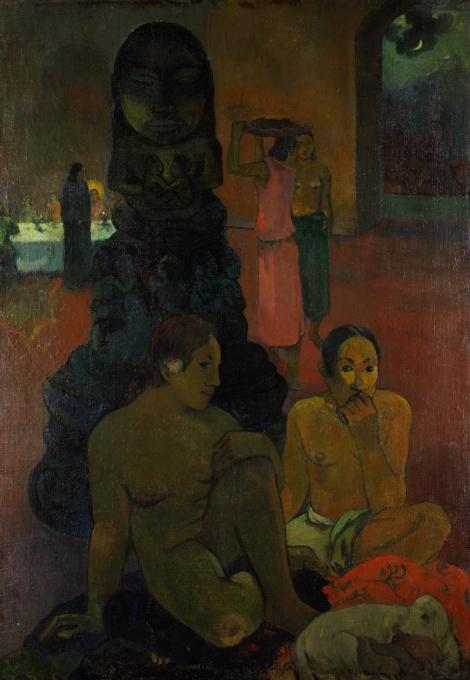
PAUL GAUGUINThe great Buddha (Le grand Bouddha)1899 134х95, oil on canvas Ж-3368 |
Gauguin's conception of art was based on the idea of the deep inner unity of all world religions. This canvas embodies the artist's religious and philosophical reflections on the fate of mankind. On the bosom of the Maori idol are two small figures facing each other. This is how Tahitian reliefs often depict the dialogue of the deities Hina and Tefatou on the fate of the human race, which is doomed to die. Gauguin repeats this motif in the foreground of the picture, in the figures of the two resting Tahitians. The figure on the left symbolises the Tahitian goddess of the Moon and Eternity Hina. Next to her is Tefatou, the god of the Earth and death. At his feet lies a dog feeding her pups, a symbol of life continuing but already doomed. The theme of sacrifice and suffering is continued by the scene of the Last Supper which appears like a vision in the far corner by the wall of the Tahitian house. |

